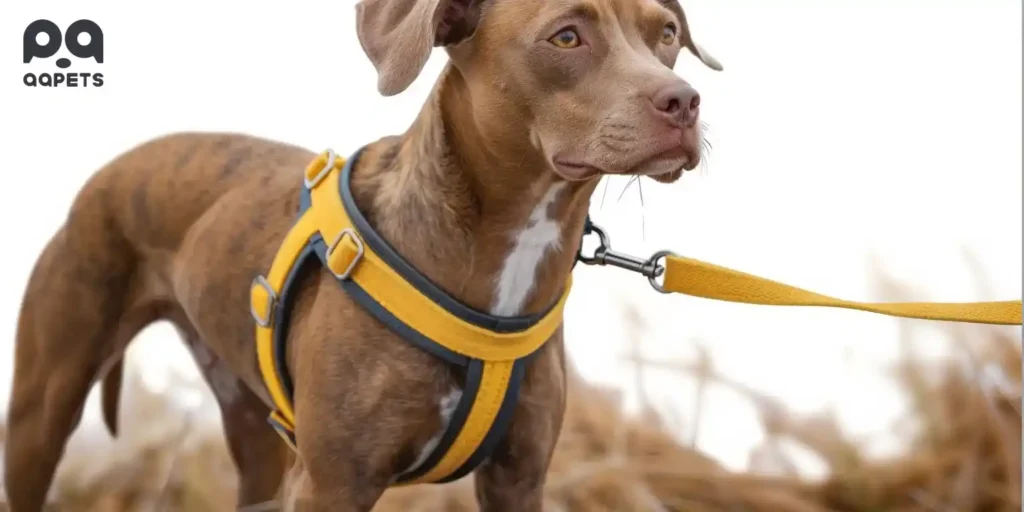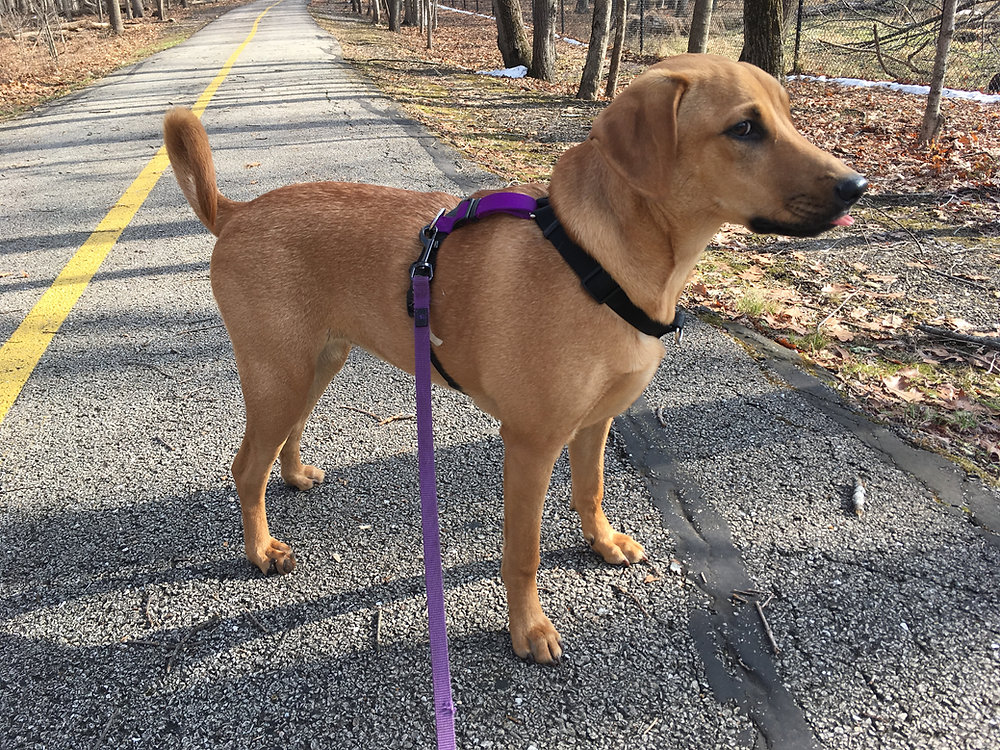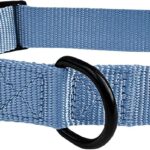Title: Harnesses for Pets with Health Issues: What to Consider for Comfort and Safety
Meta Description: Discover how to choose the best harness for pets with health issues. Learn the key factors to consider, from fit to materials, to ensure your pet’s comfort and safety.
Introduction
When selecting harnesses for pets with health issues, it’s essential to prioritize both their comfort and safety. Pets with specific health concerns—such as arthritis, mobility challenges, or post-surgery recovery—require extra consideration when choosing their walking gear. A poorly fitted or unsuitable harness can worsen these issues, leading to discomfort, pain, or even injury. In this article, we’ll explore the key factors to consider when choosing the right harness for your pet’s health needs, including the fit, material, design, and type of harness. By understanding these factors, you’ll be able to make an informed decision to enhance your pet’s quality of life.
1. The Importance of Proper Fit and Comfort
One of the most important factors when selecting a harness for pets with health issues is ensuring it fits properly. An ill-fitting harness can lead to a variety of issues such as skin irritation, chafing, and restricted movement—all of which can worsen your pet’s health concerns. Let’s look at why proper fit and comfort are essential, and how to check the fit effectively.
Risks of an Ill-Fitting Harness
- Skin Irritation and Chafing: If the harness is too tight, it can rub against your pet’s skin, causing discomfort and possible injuries like pressure sores. For pets with health issues, this can be particularly painful and detrimental to their recovery.
- Restricted Movement: For dogs with arthritis or joint pain, a harness that restricts shoulder or leg movement can cause pain or worsen the condition. On the other hand, if the harness is too loose, it may fail to provide adequate support or control.
- Breathing Difficulty: A harness that is too tight around the chest or neck can compress the airway, making it difficult for your pet to breathe properly, especially if they are recovering from respiratory issues or surgery.
How to Check and Adjust the Fit
- Measure Your Pet’s Dimensions: Before purchasing a harness, use a flexible tape measure to determine your dog’s neck and chest measurements. Be sure to follow the manufacturer’s sizing guidelines to ensure a proper fit.
- Adjust for Comfort: After fitting the harness, you should be able to slide two fingers comfortably between the harness and your pet’s body. If you cannot, the harness may be too tight and should be adjusted.
- Regular Adjustments: As your pet’s health or size changes (for example, after surgery or weight loss), it’s important to adjust the harness accordingly to ensure ongoing comfort.
Related Keyword: How to measure your dog for a harness

ALT Text: Properly fitted harness for pets with health issues to ensure comfort and safety.
2. Types of Harnesses for Pets with Health Issues
When selecting a harness for a pet with health issues, it’s important to understand the different types of harnesses available. Each design serves a specific purpose, and choosing the right one will ensure your pet’s comfort while addressing their health needs.
No-Pull Harnesses
- Purpose: No-pull harnesses are designed to prevent dogs from pulling on the leash, making them a great option for pets with behavioral issues. However, they can sometimes restrict shoulder movement, which might cause discomfort for pets with joint pain or arthritis.
- Best for: Active dogs that need help with walking control but do not have severe joint restrictions. If your dog has a history of joint pain or surgery, look for designs that allow for greater shoulder mobility.
Support Harnesses
- Purpose: These harnesses provide extra support for pets with mobility issues, such as those recovering from surgery or suffering from arthritis. Some harnesses are designed for the front end (to lift the front legs), while others support the hind end or offer full-body support.
- Best for: Dogs recovering from surgery or those with weak limbs. A front-end support harness helps lift and support your dog when walking, while a hind-end support harness is ideal for pets with difficulty walking due to back-end issues.
Gentle Leader Style
- Purpose: The Gentle Leader is a type of head halter that redirects your dog’s head rather than their body. This can be useful for training or managing pulling behaviors. However, it might not be ideal for pets with neck or shoulder issues, as it can cause discomfort if not used properly.
- Best for: Training purposes for dogs that need help with controlling their pulling behavior, but it should be used with caution if your pet has neck or shoulder discomfort.
Related Keyword: Best harness for post-surgery dogs

ALT Text: Support harness for pets with health issues, designed to assist with mobility and comfort.
3. Material and Design Considerations
The material and design of the harness are just as important as the fit. For pets with health issues, choosing the right fabric and structure can make a significant difference in their comfort and well-being.
Breathable and Comfortable Fabrics
- Breathability: For pets with health issues, comfort is key. Look for harnesses made from breathable fabrics, such as mesh or soft cotton, that allow air circulation to prevent overheating. This is especially important for pets with respiratory issues or those recovering from surgery.
- Padding: A well-padded harness ensures that your dog’s chest, neck, and back are supported without causing friction or discomfort. Extra padding can also provide more comfort for pets with arthritis or those that need a little more support.
- Durability: Choose materials that are durable and easy to clean. For example, nylon or polyester harnesses are often easy to maintain and can withstand wear and tear, especially if your pet is active.
Harness Design for Mobility and Comfort
- Freedom of Movement: The design of the harness should allow your pet to move naturally. Some harnesses are designed specifically to accommodate a dog’s anatomy, ensuring that their gait is not altered or restricted. This is important for pets recovering from surgery or those with mobility issues.
- Easy to Adjust: Adjustable straps allow for a customized fit, which is especially important if your pet’s health condition changes over time. Look for harnesses that are easy to adjust and provide a secure fit without causing discomfort.
Related Keyword: Best material for dog harness for arthritis
Call to Action
Choosing the right harness for pets with health issues can make a world of difference in their comfort and mobility. Whether you’re dealing with joint pain, surgery recovery, or behavioral issues, selecting the right harness can enhance your pet’s quality of life. Visit Found My Animal to explore a selection of high-quality, adjustable, and comfortable harnesses designed specifically for pets with health concerns. Use mytopdeals10 for 10% off your first order!
This first half of the article has covered essential factors to consider when selecting a harness for pets with health issues, including fit, material, design, and type. With these tips in mind, you can ensure your pet’s safety, comfort, and mobility while enhancing their quality of life. Stay tuned for more expert insights on training and monitoring your pet’s comfort with their new harness!
4. Training and Adjustment for Health Issues
Introducing a new harness to your pet, especially one with health issues, requires some training and adjustment. While many pets adjust quickly, others may need time to become comfortable with the harness, especially if it’s a new design or style. Gradually introducing the harness and using positive reinforcement techniques can help make this transition smoother.
Gradual Introduction to the Harness
- Start Slow: If your pet is unfamiliar with a harness, start by allowing them to get used to wearing it for short periods of time. Begin with a few minutes each day, gradually increasing the time as they become more comfortable.
- Positive Reinforcement: Use treats and praise when your pet calmly wears the harness. This helps them associate the harness with positive experiences and encourages them to wear it without stress.
- Short Walks: Once your dog has adjusted to the harness, begin with short, slow walks. This allows them to get used to the feel of the harness while giving them time to adjust to any discomfort they may feel initially.
Adjusting the Harness for Comfort
- Monitor for Discomfort: While your pet is wearing the harness, keep an eye out for signs of discomfort or irritation. If your pet shows signs of distress, such as panting, excessive scratching, or trying to remove the harness, it may need adjustment.
- Frequent Checks: Especially for pets with health issues like arthritis, it’s important to check the fit of the harness frequently. Make sure it’s still comfortable as your pet moves around and that no areas are too tight or loose.
Related Keyword: How to introduce a dog to a new harness

ALT Text: Proper introduction to a harness for pets with health issues, ensuring comfort and proper fit.
5. Monitoring for Discomfort and Health Issues
After your pet has adjusted to the harness, it’s important to continuously monitor them for any signs of discomfort or issues that might arise. A good harness should enhance your pet’s mobility and comfort, not make things worse.
Signs to Watch For
- Skin Irritation: Redness, bumps, or sores around the harness areas are signs of skin irritation caused by an ill-fitting or rough harness. If you notice any of these signs, it’s important to readjust or try a different design.
- Behavioral Changes: If your dog starts to exhibit signs of discomfort, such as limping, excessive licking, or avoiding walks, it may indicate that the harness is putting too much pressure on their joints or body.
- Excessive Pulling or Resistance: If your dog starts pulling or resisting the harness, it may not be sitting comfortably. Ensure that the straps are not too tight or irritating to sensitive areas.
Regular Check-ups and Adjustments
- Frequent Fit Checks: Regularly check the fit of the harness to ensure it hasn’t loosened or become too tight. Adjust it as necessary, especially after your pet has had a change in weight or condition.
- Post-Surgery Monitoring: If your pet is recovering from surgery, check that the harness isn’t irritating the surgical area. Use a soft, padded harness for better comfort and support during recovery.
Related Keyword: Signs of discomfort in dog harness
6. Conclusion
When choosing harnesses for pets with health issues, it’s essential to select a design that prioritizes comfort, fit, and support. An ill-fitting or uncomfortable harness can exacerbate existing health issues, making it harder for your pet to move around and enjoy their walks. By carefully considering factors such as fit, material, design, and your pet’s specific health needs, you can choose the right harness to improve their mobility and overall quality of life.
Remember, always monitor your pet’s comfort, adjust the harness regularly, and choose the type that best fits your pet’s activity level and health condition. By doing so, you’ll ensure that your pet is not only comfortable but also safe and supported on their daily adventures.
Call to Action:
Ready to find the perfect harness for your pet? Visit Found My Animal for a selection of high-quality, comfortable, and supportive harnesses designed with your pet’s health in mind. Use mytopdeals10 for 10% off your first purchase!
FAQs
What makes Found My Animal products unique?
Found My Animal offers a range of durable, handcrafted products that are specifically designed for pets with special needs. Their harnesses are adjustable and provide superior comfort and support. The premium materials used in their products ensure both durability and comfort for pets with health issues, whether it’s post-surgery recovery or arthritis.
How can I use the discount code mytopdeals10 at checkout?
To use mytopdeals10, simply visit Found My Animal, choose the harness or accessory you’d like to purchase, and head to the checkout page. Enter the code mytopdeals10 in the promo code box, and you’ll receive 10% off your order!
What’s the best harness for dogs recovering from surgery?
For dogs recovering from surgery, a support harness that provides gentle assistance while offering comfort is essential. Look for options like Kurgo’s Enhanced Strength Tru-Fit or Sleepypod’s Clickit Sport, both of which offer both support and comfort during the recovery phase.
How can I tell if my pet’s harness is causing discomfort?
Signs of discomfort include excessive scratching, biting at the harness, limping, or avoiding walks altogether. If the harness is too tight, it might cause redness or chafing, especially in areas where the harness makes contact with the skin. Regularly checking for these signs can help prevent discomfort.
How do I introduce my dog to a new harness?
Introduce the new harness slowly by allowing your dog to wear it for short periods, gradually increasing the time. Positive reinforcement, such as treats and praise, helps your dog associate the harness with positive experiences. Keep walks short and gentle to help your dog adjust comfortably.
This second half of the article emphasizes the importance of monitoring your pet’s comfort and making adjustments as necessary when using a harness for pets with health issues. By following these tips and considering your pet’s specific health needs, you can ensure a safe and enjoyable walking experience for both you and your furry friend.


